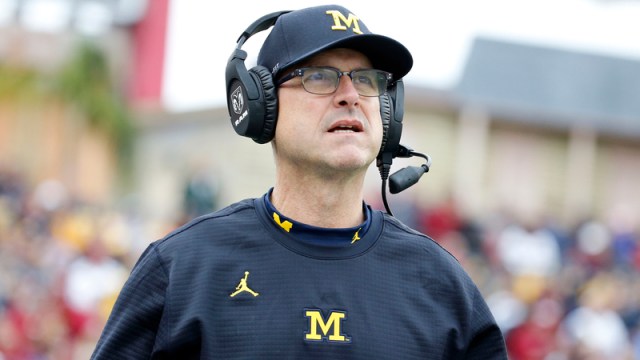Rick Porcello was confident he could make the necessary tweaks to be better in 2018 than he was last season.
He wasn’t lying.
The Boston Red Sox right-hander has been one of the best pitchers in baseball through the season’s first few weeks. Porcello picked up his fourth win Wednesday night by tossing six scoreless innings against the Los Angeles Angels, lowering his ERA to 1.40 in the process.
No American League pitcher allowed more home runs or hits last season, so Porcello’s apparent return to his 2016 form — when he won the Cy Young Award — is a welcome change for the Red Sox. The adjustments, in terms of pitch usage, are obvious.
The attack plan devised by Porcello and pitching coach Dana LeVangie is working, and it’s working because Porcello is executing all of his pitches — most importantly his fastball.
Porcello threw his four-seamer 30 percent of the time in 2017 (up from 21 percent in 2016), but this season, he’s throwing it just 12 percent of the time. Instead, he’s back to leaning heavily on his bread and butter: the two-seam fastball.
Porcello threw the two-seamer (sinker) 41 percent of the time in 2016 and only 30 percent in 2017. This season, however, he’s back to primarily using that pitch. More than 42 percent of his pitches have been two-seamers.
But when he can effectively use both fastballs, like he has this season, Porcello is elite.
Let’s take a closer look at Zack Cozart’s at-bat in the first inning Wednesday night. The Angels third baseman came up with the bases loaded and two outs in the first inning. Cozart hits the ball in the air a lot, and if you’re looking to lift, you look for pitches at the bottom of the zone to swing at with an uppercut. That’s potentially problematic for Porcello if he’s relying on the two-seamer and isn’t commanding the pitch.
The counter-attack for a pitcher is to throw fastballs up in the zone, which is primarily done with the four-seamer. That’s been an adjustment for Porcello, especially on the Red Sox, a team at the forefront of this strategy.
“It’s been a challenge,” Porcello admitted in January at Red Sox Winter Weekend. “I’ve definitely gone through some changes as a pitcher through the course of my career. It’s really only since I’ve got to Boston that I’ve started using the four-seamer a lot. It’s been a challenge I didn’t necessarily see my first five or six years, but it’s my craft. That’s what I have to do to be successful, and that’s no excuse to go out there and (fail) to execute.”
He didn’t fail to execute in the first inning against Cozart. He went right after him with four-seamers up and away, eventually getting Cozart to swing through a 93 mph fastball at the top of the zone.

It’s important not to get too predictable, though. So, the next time Cozart came up, Porcello attacked him with the two-seamer. After showing Cozart nothing but four-seamers in the previous at-bat, Porcello started the at-bat with a nasty backdoor 88 mph two-seamer at the bottom of the zone. The next pitch was another 88 mph two-seamer, this one buried off the inside corner, which Cozart swung at and missed.
Then, a 90 mph four-seamer up and away set up a sweeping slider down and out of the zone that bamboozled Cozart, who swung and missed for strike three.
Cozart’s second at-bat is indicative of what Porcello has done so far this season against right-handers: trying to jam them with two-seamers in on the hands. Fifty-five percent of his pitches this season to right-handed hitters have been two-seamers.
“He can do so many different things,” LeVangie said Wednesday night, per the Boston Herald. “He was two different pitchers tonight. He was a four-seam pitcher early in the game and then we got back to doing what he does: Sinker down in the zone, cloning all your pitches in the bottom of the zone. The score allowed him to do that. It’s a lot of fun to watch.”
It’s not just the fastball, either. Red Sox manager Alex Cora pointed to the changeup, too, which Porcello has used more often this year, with successful results. Opposing batters hit .325 against Porcello’s changeup last season; this season, that number has fallen to .182. Porcello’s fastball command helps with that, too, as he’s able to change eye levels by working in and up with the fastballs only to come back and bury a changeup. This strategy especially works against left-handed hitters, as he can induce weak contact like he did on Cole Kalhoun’s groundout to end the third inning Wednesday.
Of course, whether Porcello succeeds in his ongoing quest for consistency will define his season. But it’s hard to argue with the results so far.
Screenshots via MLB.com; pitch usage stats via Brooks Baseball







